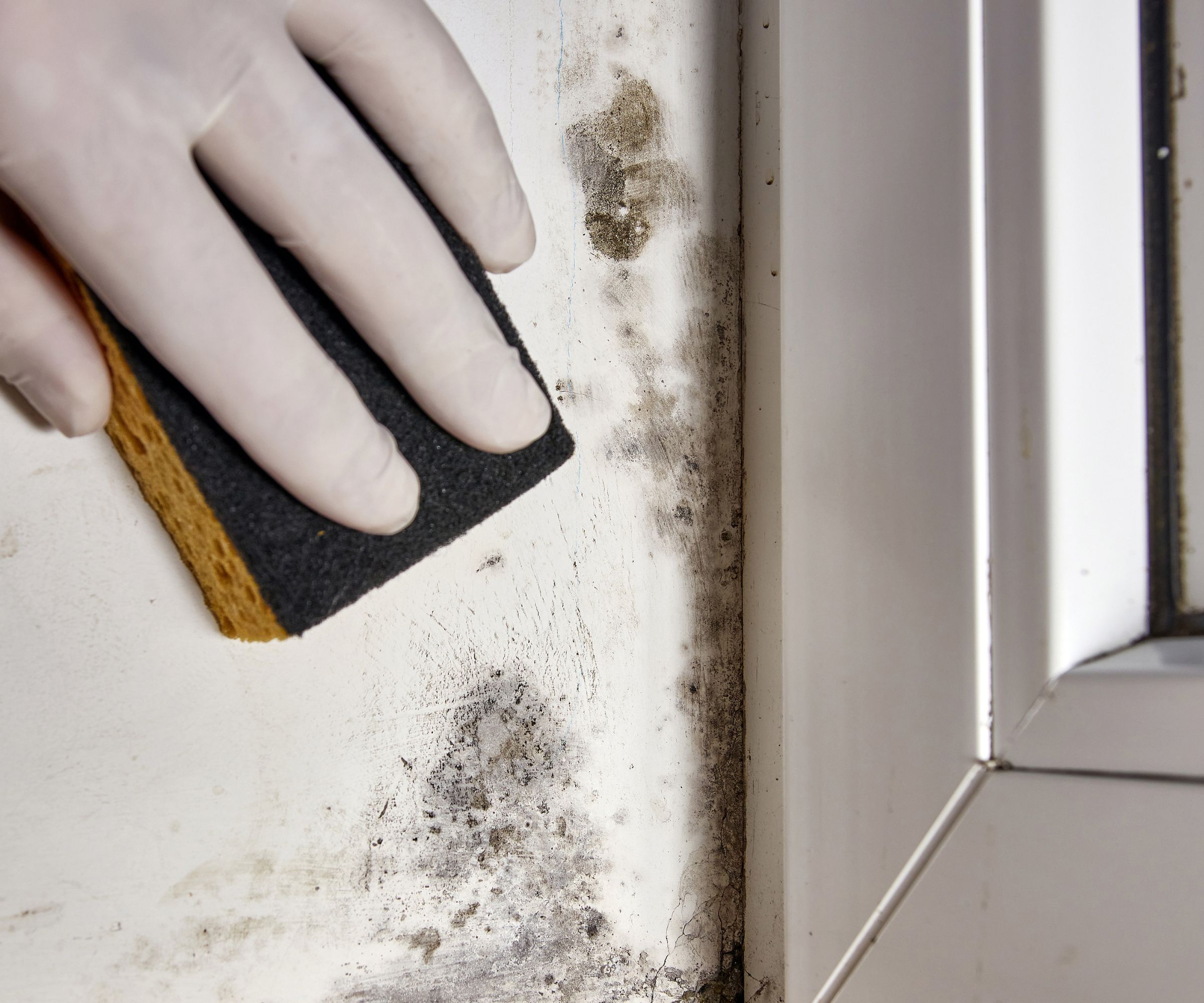
Windows and the surrounding areas are especially prone to mold and mildew growth due to frequent exposure to condensation and moisture, which provide the ideal conditions for these fungi to survive.
Mold and mildew, regardless of where they grow, are hazardous things to have in your home. They not only reduce indoor air quality, posing health risks, but can also cause severe structural damage, making their removal and prevention essential.
Beyond adopting daily habits for a mold-free home, these targeted prevention measures and cleaning tips from experts will ensure your windows and the surroundings remain mold-free.
Tips to clean and prevent mold and mildew around windows
'The most significant factor why mold and mildew grow around windows is because of condensation. If you notice them getting all fogged up, the next thing you know, there’s mold and mildew,' says James King, the operations manager at DeluxeMaid.
'When warm, damp air hits the cooler window surface, condensation forms and can stick around on the glass and frames. If it doesn't get wiped away, that moisture becomes a breeding ground for mold and mildew, especially if there's any dust or dirt present.'

If mold or mildew has already formed on your windows, you will need to remove it ASAP. This is especially important in the case of mold, as this will not only be a health hazard but can also lead to irreparable damage to windows, requiring them to be replaced.
Knowing whether you are dealing with mold vs mildew is key here since the treatment methods will vary. Mildew is a surface-level variation of mold that can easily be wiped with a gentle but effective cleaning solution. However, mold can penetrate walls more deeply and warrant more extreme measures.
To avoid this costly measure, you can use these cleaning tips to ensure your windows are fungus-free.
Cleaning tips
Mold removal
Mold remediation typically involves rigorous cleaning to ensure complete eradication and to prevent recurrence. This is especially true for porous surfaces where mold has penetrated deeply.
'If mold has extended below the surface, white vinegar is the best choice,' says Sara San Angelo, who is known professionally as The Cleaning Lady. 'The vinegar will penetrate to kill the mold and mildew at the root, preventing it from regrowing.’
However, this will not always do the job for more extreme cases, such as when getting rid of black mold. To clean mold off walls, commercial cleaners or professional intervention for mold growth over 10 square feet might be essential for complete mold removal.
'If the mold has already penetrated the surface, use commercial cleaners,' recommends James King. 'CLR Mold and Mildew works, but I suggest going for RMR-86.' This RMR-86 instant mold and mildew stain remover spray is a best seller on Amazon.
Mildew removal
Being surface-level and less invasive, mildew may be addressed through targeted cleaning methods using over-the-counter mold and mildew removers or common household items with antifungal ingredients like bleach, hydrogen peroxide, tea tree oil, and vinegar to kill mold.
You can use a spray bottle to apply the cleaning solution of your choice to the affected area. After leaving this solution to sit, wipe down the window and walls with a nonabrasive tool, such as a microfiber cloth or soft-bristled brush. Then, rinse the area thoroughly with a damp towel to remove any cleaning residue and mold or mildew spores. Dry the area thoroughly.
To use the vinegar method, Yessica Bello, owner of Bello’s Cleaning says: 'Apply a solution of white vinegar and water (equal parts) directly to the moldy areas and let it sit for about an hour. This allows the vinegar's acidic properties to break down the mildew (or mold's) structure. Afterward, wipe the area clean and dry it with a dry microfiber cloth. Ensuring that these cleaned areas are dry and well-ventilated afterward helps prevent the recurrence of mold and mildew.
'This method is safe for repeated use and contributes to maintaining a healthier living environment.'
Prevention tips

'Are you noticing mold growth around your windows? One of the most important ways to stop mold growth from happening is to know where it all starts by determining how moisture and condensation end up on your window sill,' says Jenni Archibald, owner of My Mold Masters. For example, this can be indicative of an older or poorly insulated window that is allowing too much moisture indoors and resulting in mold in these areas, indoor humidity levels that are too high, or a significant difference between indoor and outdoor temperatures.
To prevent mold and mildew buildup around windows, it's crucial to address issues that create the ideal environment to foster mold growth.
1. Humidity control
Controlling indoor humidity is essentail for reducing moisture in the air, which is a primary catalyst for mold growth.
'Often mold appears on windows because of a humidity imbalance in a space,' explains Jenni Archibald. 'Mold will grow if humidity levels are greater than 76° and 60% .' You can use these two mini hygrometers, from Amazon to monitor indoor humidity levels to ensure you maintain the best humidity levels for the home.
To control indoor humidity, use dehumidifiers and ventilate the space to sustain air movement. Run exhaust fans in your bathroom and kitchen, turning on your ceiling fans, and keeping windows open for at least 30 minutes per day to reduce indoor moisture levels.
But where's the best place to put a dehumidifier to prevent mold and mildew growth around windows? James King advises: 'Find a good spot for it in a central location or near the affected area, ensuring good air circulation around. Aim for a comfy range of around 30% to 50% humidity.
'A lot of the best dehumidifiers have a mode that keeps running all the time or a timer, so you don’t have to keep fiddling with it to keep things just right.'
2. Sealing and insulation
'Regularly checking and maintaining the integrity of window seals is also key,' says Kelly Salas, a cleaning and property maintenance specialist, and owner of Sierra Vista Maintenance. 'When these seals degrade, they allow moisture to infiltrate, creating a hospitable environment for mold.
'For immediate fixes, ensure that any gaps or cracks around window frames are sealed with caulking to block any moisture entry.' We recommend this Gorilla waterproof white caulk, from Walmart.
If the insulation has completely degraded, it will need to be professionally fixed to ensure mildew and mold growth do not become a reoccurring issue.
3. Temperature control
'Keep your indoor temperature steady to avoid condensation,' recommends James King. 'You want it to be just right, not too hot or too cold, ideally between 65°F to 70°F (18°C to 21°C).' This is because keeping a stable indoor temperature helps prevent condensation from forming on windows.
When the air indoors is warmer than on the window surface, moisture in the air can condense on the cooler glass. This will create a damp environment that promotes mold and mildew growth. Maintaining a consistent temperature within this range will reduce the likelihood of significant temperature differences between the air and the windows, stopping condesation on windows overnight and subsequent risk of mold and mildew forming.
4. Don't overwater plants
When it comes to watering any indoor plants, James King warns: 'Don’t go overboard because it can make the air inside your home too humid.
'To avoid getting water droplets on your windows, figure out the right watering schedule for your leafy additions. Do some research and pay attention to what your indoor plants needs. Let the top layer of soil dry out before you water them again, and use pots that have holes in the bottom so the water can drain out.
'Also, think about where you put your plants. If you place them closer to your windows, it can help spread out the moisture they give off more evenly in the room and stop it from collecting in one place.'
5. Regular maintenance
'Homeowners can prevent mold growth through regular cleaning and maintenance, and by limiting indoor humidity to under 60%,' says Hugh Williams, home improvement expert at Magic Window.
'Clean the windows and surrounding areas regularly – such as the window frame, sill, and tracks – to prevent dirt and organic materials from accumulating. These can retain moisture and encourage mold growth.'
When you spot condensation, don't just ignore it. Grab a clean cloth or a paper towel and wipe. Or, place a towel below the window and use a squeegee to clean the window without streaks. Afterwards, dry all parts of the window thoroughly. Do this daily, especially during colder months. Condensation is a major contributor to mold growth, and keeping surfaces dry can prevent mold from taking hold.
While you’re at it, take a moment to inspect your window frames for any weep holes or ventilation channels. They should be clear and not obstructed as stagnant air will contribute to mold growth.
You can also use natural mold-inhibiting products as part of your cleaning routine, such as using cinnamon to prevent mold.

If mold or mildew has already formed on your windows, you will need to remove it ASAP. This is especially important in the case of mold, as this will not only be a health hazard but can also lead to irreparable damage to windows, requiring them to be replaced. To avoid this costly measure, you can use these cleaning tips to ensure your windows are fungus-free.
Knowing whether you are dealing with mold vs mildew is key here since the treatment methods will vary. Mildew is a surface-level variation of mold that can easily be wiped with a gentle but effective cleaning solution. However, mold can penetrate walls more deeply and warrant more extreme measures.
FAQs
When should you replace windows that have mold?
'When a window’s insulating properties have been compromised, replacing the window might be the only solution in preventing mold and mildew growth,' says Hugh Williams, home improvement expert at Magic Window.
'Condensation on the glass, or feelings of drafts, are a tell-tale sign that a window is no longer properly insulating a home.
'In terms of what to replace them with, energy-efficient windows are best. Specifically, windows that feature double or triple glazing, warm edge spacers, and low-E coatings. Windows with wooden frames should be avoided, as the wood can absorb moisture over the course of the frame’s lifespan, and eventually lead to mold growth if not cared for properly.'
To prevent mold from spreading, use a HEPA-filtered vacuum cleaner to clean the area regularly and protect the window frame with a mold-resistant primer, such as this one from Amazon.
When opening windows to enhance ventilation, avoid doing this during rainy or particularly humid days, as this can introduce additional moisture and counteract efforts to prevent mold development.







